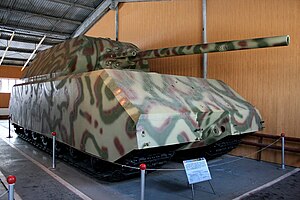 Strum Wealh, on 16 September 2013 - 08:53 AM, said:
Strum Wealh, on 16 September 2013 - 08:53 AM, said:
"Standard
BattleMech armor is composed of several layers providing various degrees of protection and support. The first layer is extremely strong steel, the result of crystal alignment and radiation treatment, which is also very brittle. The second layer is a ceramic, cubic boron nitride, which combined with a web of artificial diamond fibers acts as a backstop to the steel layer. These two layers rest atop a titanium alloy honeycomb structure which provides support, and a layer of self-sealing polymer sealant which allows for space and underwater operations.Standard BattleMech armor is composed of several layers providing various degrees of protection and support. The first layer is extremely strong steel, the result of crystal alignment and radiation treatment, which is also very brittle. The second layer is a ceramic, cubic boron nitride, which combined with a web of artificial diamond fibers acts as a backstop to the steel layer. These two layers rest atop a titanium alloy honeycomb structure which provides support, and a layer of self-sealing polymer sealant which allows for space and underwater operations."
Personally, I've always thought of armor points as some measure of thickness (millimeters or even centimeters, perhaps?) of the outermost, steel layer.

Well I often assume around a millimeter of armor per point, but thats a rather rough figure, mass to area ratios would indicate that mechs have armor thickness that are at best around an inch. Though it seems that raw thickness is less important in B-tech armor in any event.
Quote
From the previously-linked Wikipedia article:
- "The [M830] cartridge weighs approximately 53.4 lb (24.2 kg)."
- "The [M830A1] cartridge weighs 49.2 lb (22.3 kg), with the projectile accounting for 25.1 lb (11.4 kg)."
The per-shell weights being discussed include the weight of the casing, charge, the projectile itself, and so on - they
are the cartridge weights, where the weight of the projectile can be as small as ~50% of the cartridge weight.
The weight difference between HEAT and APHE doesn't seem to be significant -
one source cites the weight of the 122mm BR-471B APHE shell (used by the
ISU-122, among others, diring WWII) as 24.9 kg, versus the 24.2 kg weight of the 120mm M830.
Well two things to note, BR-471B is APBC/HE, Most WW2 AP ammo had a small HE charge, even so their not proper HE rounds by any means. Second the 24.9kg weight for BR-471B is just the weight of the shell, it dose not include any propelling charges or cartridge case.
 Karl Streiger, on 15 September 2013 - 10:42 PM, said:
Karl Streiger, on 15 September 2013 - 10:42 PM, said:
Hm - next problem - the casing - the ACs use casings that have to eject after the shot:
The M830 did use a casing from celloulose or nitro cellulose - much lighter and there is hardly any ejectable casing left.
Including a case of braz that could be reused - the weight of a 120mm shell would highly increse.
Next thing is that AC ammunition is refered as AP HE - so a projectile will weight even more.
On the other side - its really easy to take the 8 metric tons of a AC 5 - and include one or multiple barrels - one or multiple reciver, some armor and a armored magazine including the ammunition - without any need of the additional ton of ammunition.
Standard B-tech auto cannon ammo is stated as HEAP, with the novels including a DU component. I doubt B-tech uses pre WW2 era ammo any way (Most country's used APC/HE ammo, or APCBC/HE ammo in WW2 rather than AP/HE, though the US and British did not use it as often as the Germans and Russians). In any case given the stated B-tech ammo I tend to view it as being related to the
Mk 211 ammo used with 50 cal based weapons.
 Strum Wealh, on 15 September 2013 - 12:42 PM, said:
Strum Wealh, on 15 September 2013 - 12:42 PM, said:
On the other hand, the weight for the
Marauder's shells seems to work out a bit better...

The
Marauder's "GM Whirlwind" AC/5: 120mm autocannon that fires in 3-shell bursts per cassette/"round".
AC/5 ammo in BT comes in sets of 20 cassettes per ton.
(20 cassettes/ton) * (3 shells/cassette) = 60 shells per ton
(1000 kg/ton) / (60 shells/ton) = 16.667 kg per shell
By contrast, the
M830 High Explosive Anti-Tank Multi-Purpose Tracer ("HEAT-MP-T"/"MPAT") shell fired by the
M256 120mm Smoothbore Gun (the main gun on the M1 Abrams Main Battle Tank) has a mass of 24.2 kg per shell.
Its successor, the M830A1 MPAT, has a mass of 22.3 kg.
The 7.53 kg difference between the Whirlwind's shells and the M830 (or the 5.63 kg difference between the Whirlwind's shells and the M830A1) could be attributed to (among other things) the much smaller propellant charge (which would, in part, serve as an in-universe explanation for the short effective range of the weapon, if one isn't using the "LOS range" rules from TacOps)...?

M829 weighs 18.7kg
M829A1 is 20.9kg, Sabot 9kg, penitrator 4.6kg (Sabot weight inclueds the penitrator in all cases)
M829A2 is 20.4kg, Sabot 7.9kg, Penitrator 4.9kg
M829A3 is 25.4kg, Sabot 10kg, penitrator ~7kg
KEW-A1 is 19.6kg, with sabot 8.4kg with a ~5kg penitrator
DM-53 21.4kg, Sabot 8.35kg, penitrator ~5kg
So that modern 120mm ammo can be a lot closer to what B-tech indicates from the Mads ammo usage.
 Elyam, on 17 July 2013 - 11:56 AM, said:
Elyam, on 17 July 2013 - 11:56 AM, said:




































